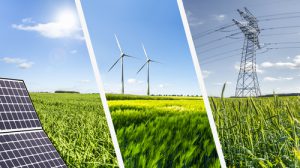By Joel Nelson on January 6, 2020 in Energy
The Advanced Research Projects Agency-Energy (ARPA-E), the U.S. Department of Energy’s R&D arm, has provided about $2 billion dollars for more than 800 potentially transformational energy technology projects since 2009. Here’s a sampling of projects currently receiving support from ARPA-E.
Fill it up, fast. The University of Illinois, Chicago, is designing a new high-power converter circuit architecture for charging electric vehicles quickly. “The reduced weight and size of the universal battery supercharger can enable both off-board stationary fast charging systems and [serve] as a portable add-on system for EV customers who require range enhancement and quick charging in 15 minutes,” ARPA-E says. The system’s bidirectional power flow capability enabling vehicle-to-grid dispatching offers another potential benefit.
No-pain windows. Massachusetts-based thermal management solutions provider Aspen Aerogels and its partners are working on a cost-effective, silica aerogel-insulated windowpane for retrofitting single-pane windows. Silica aerogels are strong insulators that resist the flow of heat. The team’s design consists of an aerogel sheet sandwiched between two glass panes to make a double glazed pane. It would be manufactured using an innovative supercritical drying method that significantly reduces drying time. The windowpane could be used to replace, at substantially lower cost, single panes in windows whose thickness or weight preclude replacement with common double-pane units.
Frozen hope. Massachusetts renewable energy technology provider American Superconductor (AMSC) is developing a freezer that doesn’t rely on harmful, inefficient liquid refrigerant systems and is more energy efficient than conventional systems. The solution uses helium gas as its refrigerant, offering hope for a safe, affordable and environmentally friendly approach to cooling. High-efficiency freezers could be mass-produced cost effectively and without polluting refrigerants.
Scrap value. Lexington, Ky.-based advanced materials developer UHV Technologies Inc. is working to apply X-rays to distinguishing between high-value metal alloys found in scrap. “UHV’s system will rapidly sort scrap metal passed over a conveyer belt, making it possible to lower metals waste while simultaneously increasing the quality of recycled metal alloys,” according to the project description. Automating the sorting process could also significantly reduce costs associated with recycling light metal scrap.
Methane methodology. The University of Delaware is engineering new metabolic engineering and synthetic biology techniques to convert methane into butanol, a liquid fuel high-energy fuel whose chemical and physical properties are compatible with current gasoline-based technologies. This technology targets high-efficiency activation of methane to methanol without consuming additional energy, followed by conversion to butanol. The two-stage technology is envisioned to recapture carbon dioxide with no carbon dioxide emissions.
Root cause analysis. Texas A&M University’s AgriLife Research program is investigating using low field magnetic resonance imaging (LF-MRI) instrumentation to image soil-root systems. “Operating much like a MRI used in a medical setting, the system can function in the field without damaging plants, unlike traditional methods such as trenching, soil coring, and root excavation,” ARPA-E says. These systems could help scientists better understand the root-water-soil interactions that drive nutrient uptake by crops, water use and carbon management, and other processes.
Laser focus. Houston-based commercial laser energy developer Foro Energy seeks to invent a high-power laser tool to help remove the extremely tough materials in aging energy assets in a timely, cost-effective, safe and environmentally responsible manner. The cutting and melting tool could transmit high-power laser light at long distances in a field environment, greatly boosting decommissioning efficiency.
Learn more about ARPA-E’s current and completed projects.
Like ARPA-E, Yardi is in the business of promoting energy efficiency. Learn how we do it.


